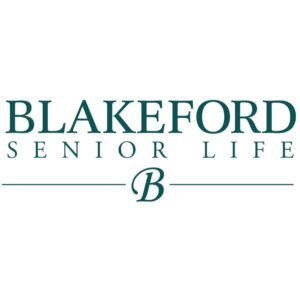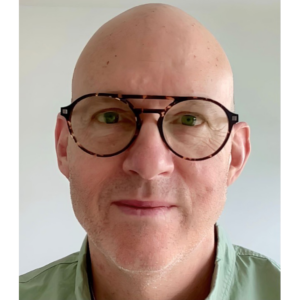Affording the household model
This is life in a “household model” skilled nursing facility (SNF): Residents awaken when they want to (often in private bedrooms with private bathrooms), and bathe and dress when they want to. They eat whatever they wish, and there’s no set meal time. They choose what activities to participate in and may even help plan them.
The aides—usually certified nursing assistants (CNAs)—are continuously trained to understand how to help residents have a full, meaningful day. And, the aides are empowered to make decisions about how to run the household in order to achieve that.
Is this a financial, operational and logistical nightmare, or the wave of the future?
The nonprofit sector has long been in the forefront of patient-centered care and culture change in long-term care settings. Will for-profit organizations—who own more than two-thirds of the SNFs in the United States—embrace the concept, which demands a huge commitment to change, a major investment in redevelopment, organizational transformation and training? Can this model be financially viable for for-profit organizations?
There are a number of variants of alternative SNF models. Sometimes they’re called “households” or “small houses.” The Green House model is one of the better-known examples. Green House “neighborhoods” might include 10 bedrooms each, while others might have up to 16 or 20. They are located in urban, suburban and rural communities, but household-style nursing homes currently represent a very small fraction of the total number of long-term residences in this country.
One example of how household models operate is Tockwotton on the Waterfront, which opened in January 2013. The $52.2 million, five-story, 156-unit nursing and assisted living center in the Waterfront District of Providence, R.I., looks like a seaside resort.
Tockwotton has assisted living apartments, memory care apartments, short-term rehabilitation rooms and 35 long-term care rooms divided into “neighborhoods.” The neighborhoods have been fully occupied since the building opened.
In the two skilled nursing neighborhoods, residents have their own rooms, which they can decorate as they please, and private bathrooms. There is no central nurses’ station; when you enter a “neighborhood,” it is like entering a large private home, with a dedicated kitchen and communal living area. Staff members work on their tablets and if they need to sit, they join residents in one of the several informal gathering spaces in the “neighborhood.” Medications are dispensed from small lockers in residents’ rooms. Each neighborhood has its own small laundry room, where the aides do residents’ laundries three times a week. No announcements crackle over a PA system.
What about financing?
Smaller developments have been successful obtaining financing from local and regional banks, while larger developments have used tax-exempt bond financing, as was the case with Tockwotton. Nonprofit organizations have also tapped philanthropic organizations, private donors and foundations; launched capital campaigns; and/or have had land donated to them.
At least one major financial source is not placing hurdles in the way of these developments. HUD does not pinpoint specific household style developments for which it has insured the mortgages, but a spokesman said that there is no difference between household versus conventional nursing facilities in its underwriting approach.
Ritchie Dickey, vice president of Lancaster Pollard, a financing and consulting firm whose clients include developers of both conventional skilled nursing facilities and household projects, has dived into the financial data for both nonprofit and for-profit developers and operators. Using the company’s own household clients, Dickey set out in 2010 to analyze the financial viability of building and operating these developments. Two years later, he revisited the topic, in a comparison between household developments and traditional nursing homes.
Dickey focused on the average cost per bed for 20 proposed projects—both household and traditional. These costs included all financial expenses, but did not include the cost of land or site development, which can be considerable.
He found that traditional nursing models ranged from 355 to 755 square feet per bed, with a cost range of $49,736 to $187,094 per bed (median of $97,861). In a 10- to 20-bed skilled nursing household, square footage per bed ranged from 500 to 1,400 square feet. Cost per bed ranged from $60,23344 to $253,750, with a median cost of $120,174.
Lancaster Pollard’s client data showed that appropriate models offer 16- to 20-unit modules (also called pods, or neighborhoods) with a flexible staff, Dickey said. He is concerned about household developments that are overbuilt, in terms of space, materials and amenities, because if they become troubled financially, it would cast a shadow for others in the field. Currently, he added, there isn’t enough information widely available on which to judge who is doing a better job, but he expects that will change in the next several years.
Martin Dickmann, formerly a financier with a private equity firm that owned nursing homes and since 2008 a partner and CFO at the consulting firm Action Pact Development LLC, said that the “sweet spot” for a household development is 20 to 22 units per house. He believes that a total of 60 to 80 units are needed for financial sustainability.
Dickmann said that it is not necessarily true that household developments cost more to build than conventional SNFs. He noted that costly mistakes—such as choosing expensive materials and finishes, or outfitting a small household as extensively as a larger one, or buying high-priced land—can certainly add to a development’s financial burden. While staffing ratios are higher for 10-person households, they could be comparable in a household of 16 residents or more, he added.
Household model proponents argue that operating cost savings can be achieved because of the flatter management structure, lower staff turnover rates and lower overall food costs. (On-demand cooking produces less waste, and leftovers can be managed.)
They also say that on the revenue side, household models attract a higher percentage of private-pay residents. Moreover, they say, residents have been willing to travel from longer distances and pay higher rates at household developments than they would for conventional nursing homes.
A for-profit embracing change
One for-profit company that has embraced the model of culture change is Louisville, Ky.-based Signature HealthCare. The company has homes in 11 states, mostly in urban and rural locations in the South and Mid-Atlantic regions. It has nearly 24,000 employees. Since 2011, Signature has listed 37 of its 143 homes on the Eden Alternative Registry and its goal is 61 by the end of this year. Getting a spot on the registry is not a simple process—SNFs must achieve the four Eden Alternative “milestones” in order to be listed, beginning with a commitment to change by top management. Currently there are 190 SNFs on the registry, 45 percent owned and operated by for-profit companies and 55 percent by nonprofit, county or government sponsors.
Angie McAllister, director of cultural transformation at the company, said that the company first tested the model in several homes for a year or two and then started expanding it dramatically. Close to 1,000 people have been through the training in the company, including senior leaders. McAllister’s staff of eight educators work to assure training is consistent no matter the location. All of the company’s SNFs are transitioning to a neighborhood model.
The training is costly, she said, but the company is making the investment because it felt it was so important. “It’s very empowering for CNAs,” she said.
The company does not use the “universal worker” term; its preferred term is a “holistic caregiver.” Services are provided by “quality of life” staff and CNAs. McAllister said that while CNAs used to be assigned to 10 residents each, now they care for six or seven. That enables them to spend more time with elders and do more individualized activities.
“It’s financially viable,” McAllister said. Clinical and financial savings have been notable, with a large reduction in anti-psychotic medications and reduced food costs, because the residents are eating foods they like and don’t need supplements. There is less waste. Labor costs are not higher with this model, either, she said, adding that “this is not an efficiency model. No one’s losing their job.”
Signature pays attention to education for elder residents and their families, because the notion of more personal choice and participation in decision-making can seem foreign to consumers accustomed to an institutional setting, McAllister added.
“We said, ‘we want this to be as close to home as possible. We want you to have more choices,’” she said. “At first they were skeptical.” But that changed over time. And it does take time to build strong relationships between all stakeholders: elders, families and employees alike. “Families are some of our strongest supporters,” she said.
Tockwotton executive director Kevin McKay also is a passionate advocate for culture change. One struggle with this style of management, he noted, is that it can take time for newly hired staff, who are more accustomed to the medical model of operations and management, to fully embrace culture change. It is also a challenge to find nursing assistants who can be equally adept at housekeeping and cooking as they are at direct care.
How would he advise others who might want to adopt culture change practices? The first major and critical step would be for top leadership of an organization to buy into it. Next, he stressed, echoing McAllister’s remarks, “You can’t do enough training.”
 Ellen Rand is a journalist and hospice volunteer. She is author of the book, Last Comforts: Notes from the Forefront of Late Life Care. Contact her at her blog page, or follow her on Twitter at @EllenRandNJ.
Ellen Rand is a journalist and hospice volunteer. She is author of the book, Last Comforts: Notes from the Forefront of Late Life Care. Contact her at her blog page, or follow her on Twitter at @EllenRandNJ.
Related Articles
Topics: Articles , Executive Leadership , Operations











